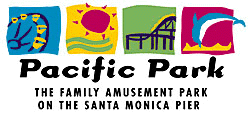
Harding, Larmore Kutcher & Kozal, LLP
 When one lives in a city as breathtakingly beautiful and unique as Santa Monica, inevitably that city will be shared with visitors.
When one lives in a city as breathtakingly beautiful and unique as Santa Monica, inevitably that city will be shared with visitors.
By Jason Islas
Lookout reporter
April 29, 2014 -- A recent decision by federal regulators to allow Internet providers to charge companies higher rates for access to faster Internet service has been roundly criticized as an end to the government’s long-standing commitment to so-called net neutrality.
But officials say the end of net neutrality -- the principle that all Internet content should be treated equally -- has not come to Santa Monica, where the businesses -- and soon residents -- have the option to eschew major Internet providers such as Time Warner Cable and Verizon, and instead tap into a City-owned network of fiber-optic cables.
“With recent federal administrative decisions allowing an unequal playing field for various Internet services, our independent ability to provide true net neutrality to users here in Santa Monica becomes a critically important distinction, further validating our decision to install our own fiber-optic network,” said Councilmember Kevin McKeown, who was on the City’s Telecommunications Task Force in 1997 before being elected to the council.
Out of that task force came Santa Monica’s Telecommunications Master Plan, which called for a City-owned network of fiber-optic cables under city streets.
“We were among the first municipalities to establish a telecommunications master plan,” said Jory Wolf, Santa Monica’s chief information officer.
“With the Telecommunications Act of 1996, we realized Santa Monica needed to be on what was then called the Information Superhighway,” he said. “If your community was to thrive, it needed to have broadband.”
Today, approximately 130 businesses -- from hotels to tech startups and entertainment companies -- use the City’s fiber-optic cables, in part because Santa Monica can offer competitive pricing.
A March report from the Institute for Local Self-Reliance says the City has made more than $5 million from leasing 'leasing fiber to other service providers and providing services to local businesses."
In 2005, Wolf said, the City offered businesses Internet access that was 10 times faster and one-third the price of competitors such as Verizon.
“It gives the community a choice,” he said.
Since then, to compete in Santa Monica, national Internet providers have had to lower their rates, Wolf said. “We don’t have the type of overhead that the national carriers do.”
Santa Monica’s fiber-optic network, which started as an initiative for the City, school district and college, is part of the reason the bayside city has come to be known as “Silicon Beach.”
“The decision we made to invest in fiber early on has been an unseen but crucial factor in the growth of Santa Monica’s economy, whether for traditional businesses, digital content creators or the new innovators who have coalesced here as ‘Silicon Beach,’” McKewon said.
But the City anticipates connecting more than just businesses to the network.
“Getting super-speed and low-cost Internet connections from our City network into residents’ homes is the next challenge,” McKeown said. “We have the broadband capacity to let every
Santa Monican connect, though, and in the long term we will surely find a way.”
Wolf said this could being later this summer when the City begins a pilot program to connect units in multi-family homes to the fiber-optic network.
“We haven’t selected (the exact number), but it will be at least 50 to 100 units,” said Wolf, adding that the pilot program would target parts of the city where residents are underserved.
McKeown likened the policy of keeping low-cost Internet readily available to residents
“to the provision of public libraries a century ago.”
He said, “We’ve already seen in our schools and in our local economy what online communications capabilities can do to build a better future. Information is the wealth of the 21st century, and Santa Monica continues to be a leader in its distribution.”
Mike Feinstein, who sat on the City Council when it approved the fiber-optic network, agreed.
“The ability to communicate with each other is basic to our humanity, and far too precious to leave up to market forces,” he said. “Here in Santa Monica, we had the foresight to create a publicly owned infrastructure that tips the balance around information being more of a service and less of a commodity.
He added, “Because our Municipal Fiber Network (MFN) has been installed quietly over time, it’s easy to forget the historic significance of this move, until perhaps the next information/democracy crisis comes along. The FCC's recommendation to abandon net neutrality may just be that crisis, and I feel better going into it that we have our MFN.”
